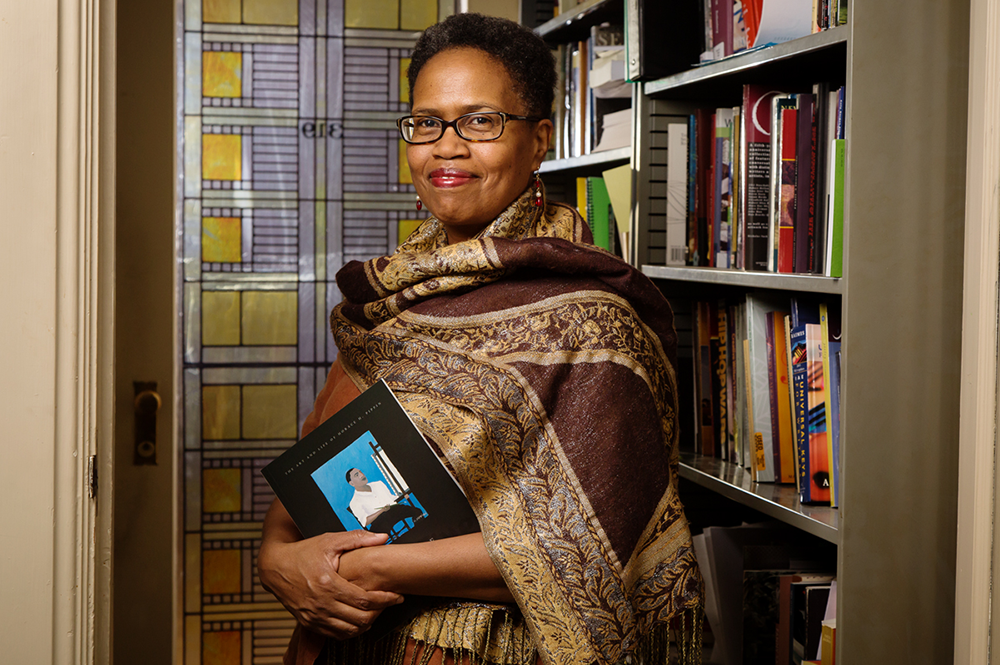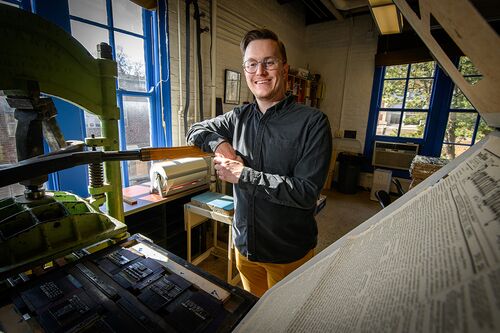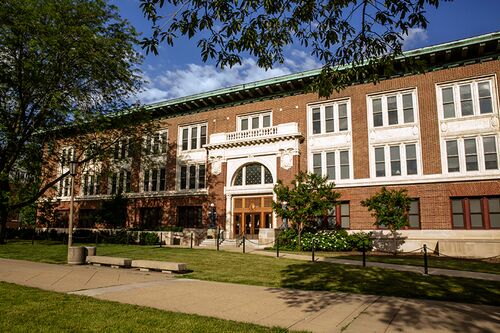Poet Janice Harrington's new work reflects on the life and art of painter Horace Pippin

Artist Horace Pippin was well-known in the 1930s and 1940s for his paintings of African-American life and for his commentary on war. But his work also was described by some as crude and unsophisticated.
Poet Janie Harrington found inspiration for her latest book of poetry in the life and art of Pippin. Her book “Primitive: The Art and Life of Horace H. Pippin” is both a critique of the perception of African-American folk art as primitive and a reflection on Pippin’s life and how his experiences influenced his art.
“I see him as a storyteller who told stories with paint,” said Harrington, a University of Illinois English professor who teaches creative writing and who writes children’s books as well as poetry.
“Primitive” was published this month by BOA Editions.
Harrington first learned about Pippin while working as a librarian and helping to put together materials for elementary school students to learn about African-American artists.
“I gravitated toward him because he had every reason not to make art. He didn’t come from a wealthy family. He went to segregated schools. He lived at a time when racism was virulent. He was a soldier in World War I and came home from the war with a paralyzed arm,” Harrington said.
“He always made art, even as a child,” she said. “He always held on to art and made art, and that’s what makes him so compelling.”
Harrington also likes his paintings. She particularly likes “Domino Players,” showing two adults gathered around a table playing dominos while a child watches and an elderly woman quilts in the background. It reminds her of watching her family playing cards when she was a child.
“When I got to see (his paintings) in real life, I realized that seeing them in a book doesn’t prepare you for how lovely they are,” Harrington said. “They’re mesmerizing.”
His first painting, “The End of War,” was one of his strongest paintings, a protest against war, she said.
His Holy Mountain series of paintings depicted Bible verses such as Isaiah 11:6, showing the wolf and leopard lying down with the lamb and kid. In the background of such paintings, Pippin included images of white crosses that would have marked soldiers’ graves, of black soldiers carrying rifles or of a lynched black man.
While he wanted to paint a scene offering hope for peace, “he’s also making a comment on the world that he’s living in,” Harrington said. “You look at these pictures and see a man paying attention to the world, speaking back to the world, and making a protest. He uses art to bear witness.”
Harrington researched Pippin’s life and work by reading his war diaries, which are online at the Smithsonian Institution; reading newspaper clippings in archives, scholarly articles and books; traveling to museums to see his paintings; and visiting his childhood home in Goshen, New York, and his home in West Chester, Pennsylvania.
“I was looking for something that stirred my imagination, that would provoke a creative response,” she said.
Her poems aren’t a scholarly or historical portrayal of him, but her response to his paintings and writing.
“You’re not going to learn all about his life from the poems,” she said. “I want people to want to know more.”
In fact, one of her poems is a complete act of imagination – “Newly Discovered Portrait of America’s First Black President by Horace H. Pippin (1888-1946).” In that poem, she imagines what a portrait of Barack Obama, painted by Pippin, would look like. She writes about how Obama’s face might look with the grounds of the White House behind him in the painting and, in the background, images of black soldiers, a black preacher and four girls in dresses carrying white roses. Harrington imagines that Pippin would include the images of Martin Luther King Jr. and the four girls killed in the 1963 Birmingham church bombing.
“I learned from Pippin that paying attention, just looking at the smallest detail, is an important act. It’s an act of witness. It’s a political act,” she said.
The first poem in her book, “Picture of the Poet and Horace H. Pippin Before the Perigee,” ends with the phrase “I think of you / and your long-ago answer, to look, / and look beyond: small and necessary acts.”
“That’s what the book is to me,” Harrington said. “I hope that’s what people will take away, the importance of paying attention to the world and not being asleep.”








